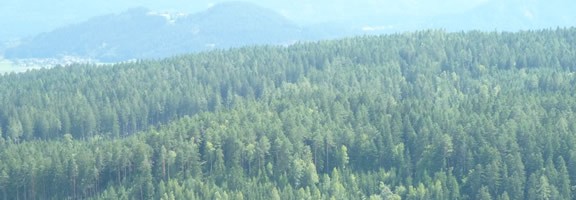Forest finance is the language of managing forest resources as investments. Analysts use finance to compare projects and identify those that satisfy the predetermined criteria of clients or managers. Timberland investors naturally care about the cash flows and distributions from timberland investments over time. These cash flows vary with the products grown, markets served and age distribution of the forest owned. Also, timberland portfolios can be constructed to meet a range of cash flow objectives. That said, the use of cash-on-cash return as a performance metric for timberland investments has narrow applications, if any.
What is Cash-on-Cash Return?
Cash-on-cash return (COCR) is a measure – a percentage – often used by investors for income-producing real estate. It is calculated by dividing before-tax cash flow by the amount of cash invested (down payment amount). If, for example, before-tax cash flow for an investment property is $15,000 and our invested cash is $100,000, then cash on cash return is 15% ($15K/$100K).

The “annual dollar income” is the cash flow the property is expected to generate during the first year of operation. The “total dollar investment” is the total cash invested to acquire the property including down payment, loan points, title fees, appraisals and inspection costs.
How does COCR Differ from Return on Investment (ROI)?
Return on investment (ROI) differs from COCR. Consider the following example: you acquire a timberland tract for $500,000 and sell it later for $550,000. Your ROI is 10%. The 10% return ($50,000 increase on $500,000 invested) reflects the increase in your “total investment (Loan + Down Payment).” If you put down 50% ($250,000), not accounting for closing costs and commissions, your cash on cash return is 20%. The return you made on invested CASH is 20% ($50,000 increase on $250,000 cash invested). If you paid all cash for the tract, then COCR and ROI are equal.
Why is COCR Problematic for Timberland Investments?
Most reported returns from timberland investments reflect unrealized gains. Timberland indices and appraisals have limitations, complicating efforts to check the status of active timber investments. This spotlights ways to use hard measures – like cash – to assess performance. As such, investors new to the timberland asset class often ask about the use of cash-on-cash returns for timberlands, and seek to apply it as a point of comparison.
However, COCR does not account for the time value of money. Cash-on-cash return must be restricted to simply measuring a residential income property’s first year cash flow and not its future year’s cash flows. Why? The first year’s COCR estimate will be the most accurate; each successive year becomes increasingly speculative.
Also, COCR does not account for appreciation. Lower COCR today may lead to a greater opportunity for appreciation than acquiring a property with steady COCR and little or no appreciation. For timberlands in particular, a meaningful analysis should account for the facts that rates of timber growth differ by age, investment objectives differ by timber portfolio, and the pace of increased values vary as forests grow and move through higher product classes in changing markets over time.
For example, buying and owning a juvenile 8-year old forest for ten years may generate minimal cash flows while appreciating in value through biological and product growth. Alternately, buying and owning a mature 30-year old plantation may generate tremendous cash flows in the first year while appreciating minimally. While the juvenile forest may have a low COCR, it may in fact prove a superior value creating investment when evaluated using discounted cash flow (DCF) measures such as net present value (NPV) and internal rate of return (IRR).
While COCR provides one way for real estate investors to quickly compare the profitability of different income-producing properties or investments, it has limits for measuring returns or wealth creation over time. This makes cash-on-cash returns a problematic performance metric for timberland investments.
This content may not be used or reproduced in any manner whatsoever, in part or in whole, without written permission of LANDTHINK. Use of this content without permission is a violation of federal copyright law. The articles, posts, comments, opinions and information provided by LANDTHINK are for informational and research purposes only and DOES NOT substitute or coincide with the advice of an attorney, accountant, real estate broker or any other licensed real estate professional. LANDTHINK strongly advises visitors and readers to seek their own professional guidance and advice related to buying, investing in or selling real estate.








Add Comment